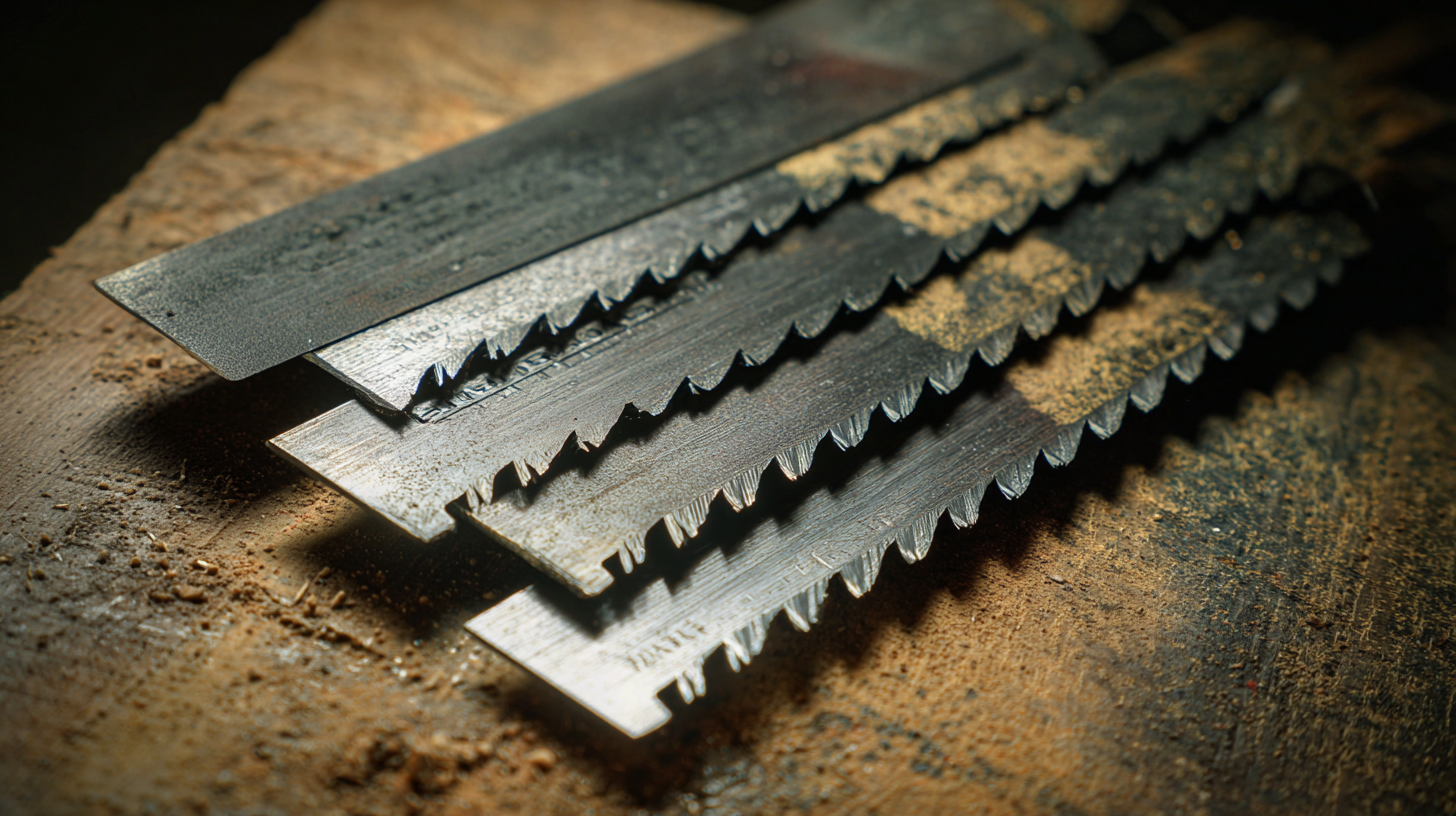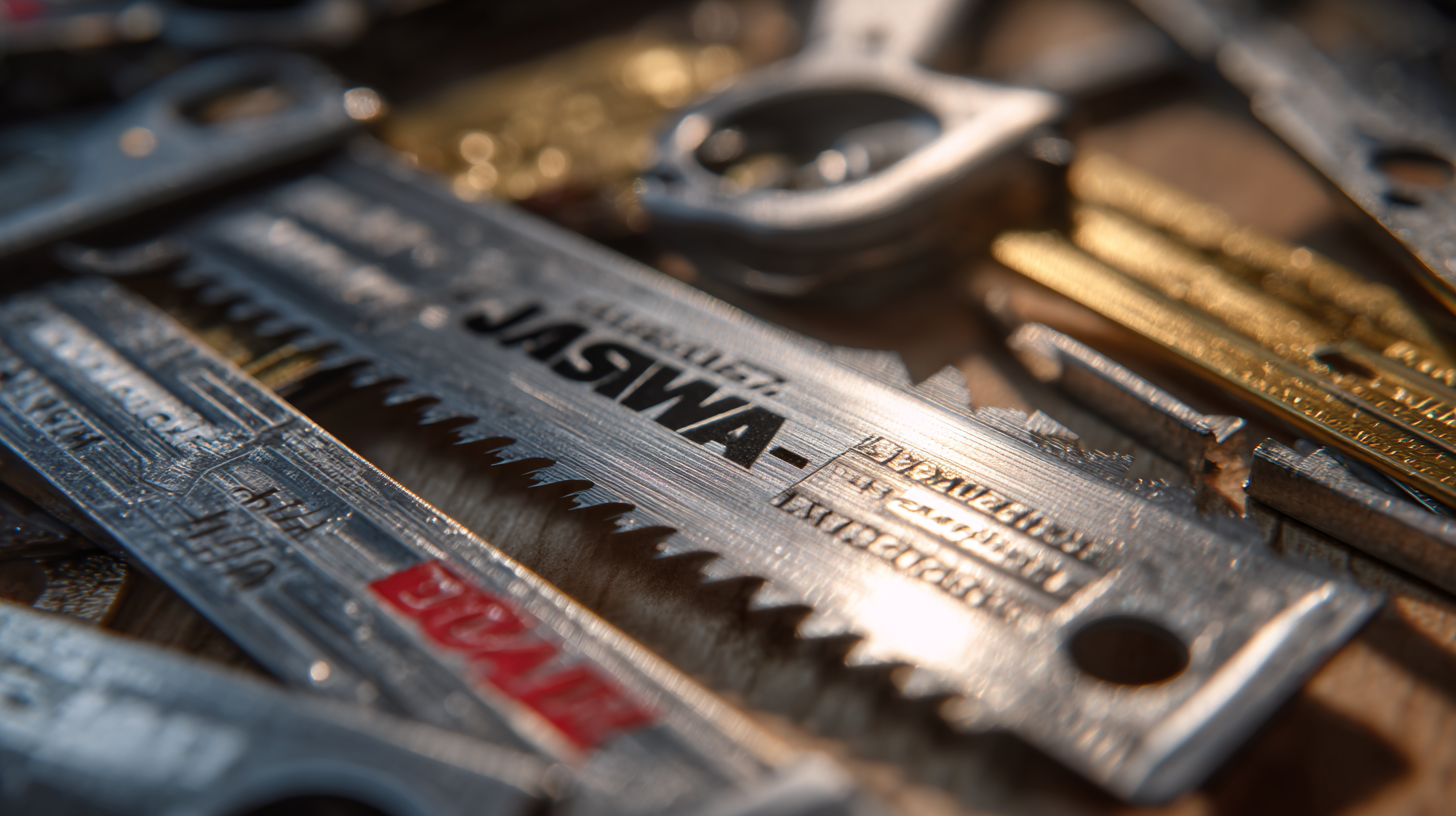Mastering Precision Cuts: A Comprehensive Guide to Choosing the Best Jigsaw Blades for Any Project
In the world of woodworking and home improvement, precision is key, and the right tools can make all the difference. Among these tools, jigsaw blades stand out for their versatility and effectiveness in executing intricate cuts. According to the Freedonia Group, the global market for power tools, including jigsaw blades, is projected to reach $9.1 billion by 2026, reflecting the rising demand for professional-grade equipment among DIY enthusiasts and contractors alike.

Selecting the appropriate jigsaw blades not only enhances cutting accuracy but also significantly impacts project outcomes, making it essential for both novice and experienced users to master this crucial aspect of tool selection. With numerous options available, understanding the various types and their intended applications is vital for achieving high-quality results in any woodworking project. This comprehensive guide will delve into the specifics of jigsaw blade selection, empowering readers to make informed choices that elevate their craftsmanship.
Understanding Jigsaw Blades: Types and Their Unique Features
When selecting the right jigsaw blade for your project, understanding the various types and their unique features is essential. Jigsaw blades are primarily categorized into three types: TPI (teeth per inch), tooth shape, and material. According to a report by the Home Improvement Research Institute, the appropriate TPI can significantly impact cutting performance, with general guidelines suggesting that blades with 10-14 TPI are ideal for medium to thick materials, while higher TPI blades are suited for finer cuts in thinner materials.
The tooth shape also plays a crucial role in determining the blade's effectiveness. For instance, blades designed with a reverse tooth feature minimize splintering on the top surface of the wood, making them excellent for laminate materials. Conversely, a blade with aggressive tooth shapes can significantly enhance speed in cutting through metals or dense woods. Furthermore, materials used in blade construction, such as high-speed steel or bi-metal designs, affect durability and longevity, making it vital for users to choose blades that match the material being cut. A study by the International Journal of Advanced Manufacturing Technology found that using the correct blade type could increase cutting efficiency by up to 30%, underscoring the importance of informed choice in blade selection.

How to Choose the Right Blade for Different Materials and Projects
When embarking on any DIY project, selecting the right jigsaw blade can make a significant difference in precision and quality. According to a 2021 study by the Hand Tools Institute, over 60% of woodworking errors can be attributed to improper blade selection. Factors such as blade material, teeth per inch (TPI), and kerf width all play crucial roles in achieving the desired results for various materials. For example, high-TPI blades are ideal for intricate cuts in wood and laminate, allowing for smoother edges, while robust, lower-TPI blades work wonders for thicker materials like metal and plastics.

Different projects demand specific features from jigsaw blades. A report by the National Association of Home Builders highlights that homeowners often prefer versatility in their tools. Blades designed with bi-metal constructions are particularly favored for their durability and ability to cut through diverse substances. Furthermore, users should consider specialized blades, such as those with reverse teeth, which minimize splintering on materials like plywood. Understanding these nuances not only enhances project outcomes but also extends the lifespan of your tools, ensuring each cut is executed with precision and efficiency.
Mastering Blade Thickness and TPI: The Key to Precision Cuts
When it comes to achieving precision cuts with a jigsaw, understanding blade thickness and TPI (teeth per inch) is vital. The thickness of the blade impacts the stability and control during cutting; thicker blades often provide more rigidity, which is essential for precise work. On the other hand, a thinner blade allows for tighter curves, making it indispensable for intricate designs. Therefore, choosing the right blade thickness should align with the demands of your specific project.
Tip: For fine, detailed cuts, opt for a blade with higher TPI, as it creates cleaner cuts and minimizes the risk of splintering. Conversely, if your project involves cutting thicker materials, lower TPI blades can penetrate more effectively. Always consider the material type as well; harder materials may necessitate specialized blades designed to maintain their sharpness and efficiency.
Furthermore, when selecting jigsaw blades, assess the overall quality and ensure compatibility with your jigsaw model. Quality blades are key to enhancing the performance and longevity of your tool. Frequent blade changes can disrupt workflow, so investing in durable blades is a wise choice that pays off in precision and productivity.
Mastering Precision Cuts: Understanding Jigsaw Blades
Maintaining and Caring for Your Jigsaw Blades for Longevity
When it comes to maintaining the longevity of your jigsaw blades, proper care is paramount. Regular cleaning is essential to remove resin, dust, and other debris that can accumulate during use. A simple brush or cloth can effectively clean the blade after each project. Additionally, storing your jigsaw blades in a protective case or sleeve will prevent them from getting nicked or damaged, which can compromise their cutting efficiency. It's also advisable to check for any signs of wear or dullness before starting a new task, as using a worn blade can lead to poor cuts and even safety hazards.
Moreover, using the right type of blade for each project not only enhances performance but also extends blade life. For instance, high-carbon stainless steel blades are renowned for their exceptional sharpness and durability, making them a popular choice for various cutting applications. When switching between different materials, ensure you're using blades specifically designed for wood, metal, or plastic, as this allows for optimal performance and reduces unnecessary wear and tear. By following these maintenance tips, you can ensure your jigsaw blades remain in top condition, ready for any project that comes your way.
Expert Tips for Safely Using Jigsaws and Achieving Perfect Cuts
When working with jigsaws, safety should always be your top priority. Start by wearing appropriate personal protective equipment, including safety goggles and ear protection. Ensure your workspace is well-lit and free from clutter to minimize distractions. It’s crucial to secure your material properly before cutting; clamps can help hold your workpiece steady, reducing the risk of slipping or moving while you’re operating the jigsaw. Additionally, double-check your blade settings and ensure you’re using the correct blade for your material to achieve smooth, clean cuts.
Another key aspect of jigsaw safety is the proper handling of the tool itself. Keep both hands on the jigsaw while cutting—one on the handle and the other on the front or the base for better control. Always make sure that the jigsaw is plugged in only when you're ready to cut. Let the blade come to full speed before engaging with the material, and maintain a steady pace throughout the cut. For intricate designs or corners, consider cutting slightly outside the line first and then refining the edge for precision. Following these expert tips will help you properly use a jigsaw for perfect cuts while ensuring your safety throughout the process.